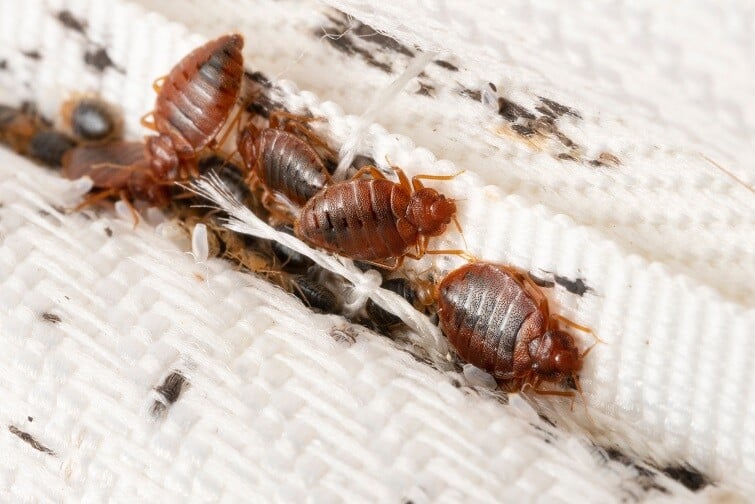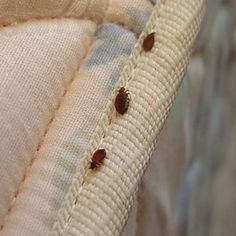Experienced Philly Exterminator in Philadelphia for Bed Bugs
Wiki Article
The Science of Pest Control: Understanding the Biology of Common Household Pests
In the realm of bug control, a profound understanding of the biological intricacies of usual family parasites serves as the foundation of efficient monitoring techniques. By delving into the nuanced life cycles, behavior patterns, and reproduction strategies of these unwanted burglars, we reveal a wealth of knowledge that can substantially impact our ability to regulate their populaces. From the precise practices of tiny insects to the complex breeding routines of bigger parasites, the understandings acquired from researching their biology offer a critical foundation for developing targeted and sustainable services. Join us as we decipher the clinical supports of parasite control and explore the interesting world that exists within our homes (exterminator philadelphia bed bugs philly).Importance of Pest Biology
The understanding of insect biology is vital for reliable pest control strategies in household setups. By delving right into the biology of common home bugs, individuals can acquire beneficial understandings into their habits, life cycles, and habitats. This understanding is necessary for establishing targeted and lasting pest monitoring comes close to that lessen using unsafe chemicals and reduce environmental impact.
Pest biology incorporates various factors that influence pest infestations, consisting of reproductive rates, liked food resources, and survival mechanisms. For example, comprehending the reproducing patterns of bugs such as mosquitoes or cockroaches can aid house owners carry out safety nets to interrupt their life process and reduce populations. Likewise, knowing the foraging habits of ants or rodents can help in finding and removing their access points to food sources within a house.
Life Cycles of Typical Bugs
Comprehending the life process of typical bugs is important for executing efficient bug control steps in residential environments. The life process of an insect refers to the stages it undergoes from birth to their adult years and consists of egg, larva, pupa, and adult stages. Knowing these phases assists in determining one of the most susceptible factors in the bug's life process for targeted control strategies.As an example, common home parasites like roaches have an insufficient transformation, proceeding from egg to fairy to adult. Recognizing this cycle can assist in targeting egg-laying sites, interfering with recreation, and protecting against the development of new adults. On the other hand, insects like mosquitoes undertake a complete transformation with egg, larva, pupa, and grown-up stages. By concentrating on getting rid of reproducing websites such as standing water, it is possible to disrupt the life cycle and minimize insect populations effectively.
Actions Patterns of Family Insects
An extensive evaluation of home bugs reveals complex actions patterns that play a vital duty in comprehending parasite control techniques. Household bugs exhibit different habits patterns that add to their survival and capacity to thrive in human habitats. Recognizing these patterns is important for effective bug management.One usual actions amongst home pests is their tourist attraction to food sources. Insects such as ants, roaches, and kitchen pests are drawn to food spills, deposits, and crumbs. By identifying and getting rid of these food resources, index home owners can disrupt the bugs' foraging patterns and minimize invasions.

Additionally, many household pests show social actions, residing in nests or teams. Understanding the social dynamics of bugs like ants or termites is important for properly getting rid of entire colonies as opposed to simply specific insects. By understanding site the behavior patterns of household bugs, pest control professionals can establish targeted and efficient strategies to manage infestations successfully.
Reproduction Techniques in Pests
Recreation in parasites entails complex organic systems that drive population development and problem prices. Insects have actually evolved various strategies to make sure the extension of their varieties and the effective emigration of new environments. One usual strategy is rapid recreation, where pests have brief gestation periods and create huge numbers of children. This strategy enables them to swiftly establish thriving populations in desirable problems. Furthermore, some bugs display complex mating behaviors, such as scent interaction and courtship rituals, to make certain effective recreation.Another critical element of parasite recreation is the growth of resistance to control steps. Pests can adapt to chemicals and various other removal methods with devices like behavior adjustments and genetic anomalies. This ability to evolve swiftly postures a significant obstacle for insect control efforts, requiring constant innovation in monitoring techniques.

Influence of Biology on Insect Control
The biological qualities of bugs play a vital duty fit the performance of bug control techniques. Recognizing the biology of common household insects is necessary for establishing effective insect management techniques (philly philadelphia pest best exterminating company control bed bugs). Aspects such as the life-span of a bug, its reproductive rate, favored environments, and feeding habits all influence the choice of control stepsAs an example, parasites with fast reproductive rates, such as roaches or certain species of ants, may need a lot more aggressive and sustained control initiatives to avoid population spikes. Pests that have created resistance to specific chemicals will require the use of alternate control techniques to efficiently manage invasions.
Furthermore, the biology of parasites additionally impacts the timing and frequency of control applications. Some bugs are more active throughout certain times of the year or under particular environmental problems, calling for targeted treatments during these periods to achieve ideal results.
Verdict
In verdict, comprehending the biology of common home insects is crucial in reliable insect control. By recognizing their life process, behavior patterns, and recreation methods, we can create targeted and efficient approaches to handle and eradicate these insects. By taking into consideration the organic facets of pests, we can execute a lot more long-lasting and sustainable services that reduce the impact of insects on our homes and settings.In the realm of pest control, a profound understanding of the biological details of typical household parasites serves as the keystone of effective monitoring strategies.The understanding of parasite biology is essential for effective insect control approaches in property settings.Recognizing the life cycles of common insects is essential for applying effective pest control actions in household settings.The organic attributes of parasites play an important function in shaping the effectiveness of bug control approaches.In final thought, understanding the biology of usual home parasites is essential in efficient insect control.
Report this wiki page